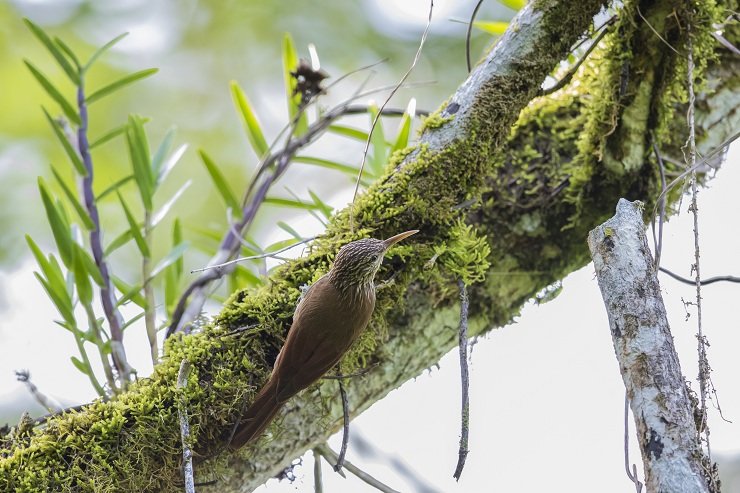
Getting familiar with birds is a process. As a child, poring through the pages of the Encyclopedia of Animal Life (I was gifted this 25 years before I appeared in Audubon magazine myself) birds gripped my attention. If anyone else had this book growing up you’d be well aware of how its pages were the equivalent of the unending scrolling on Facebook.
But this book taught me about eagles, owls, storks and herons. Not all the birds, of course, but many of the distinctive and conspicuous species. Woodpeckers were quite prominent, both in non-fiction works like the encyclopedia and in entertainment. Absolutely nothing prepared me for woodcreepers, however.
I remember the first time I saw one, it was a Streak-headed Woodcreeper and it was hopping up the underside of a branch. Yes, you read that correctly – it was seemingly reversing the laws of gravity. I was blown away. Its diminutive stature, rich brown coloration and dissimilarity with all other birds I had known before rendered me speechless. I got a picture and sent it to a birder friend of mine who unforgettably remarked “any woodcreeper is a good woodcreeper”. A comment that stirred my interest in the family more than anything.
Turns out that the Streak-headed Woodcreeper was a formerly uncommon resident of Trinidad, its range gradually increasing to cover semi-degraded and altered habitat. Prevalent in the cocoa estates of the fertile central belt on the island, it remained a special bird in my mind for many years.

Streak-headed Woodcreeper
Very soon, the other members of this unique family were on my radar. They all followed the same general model, different permutations of the same ingredients. From the largest to the smallest, I was completely intrigued by their superficial similarities yet significant differences which only became apparent after careful scrutiny.
T&T has five recorded species of woodcreeper, all resident. Four of those are resident on Trinidad, and one is found only on Tobago. They all have subtle nuances about their behavior I have come to thoroughly enjoy over the years.
The largest of the five is the ubiquitous Cocoa Woodcreeper. It took me many years to photograph this bird properly – it is much more often heard than it is seen, its far-carrying vocalization is a staple of the aural landscape on both Trinidad and Tobago. Its head and neck have a carefully scalloped look, and it is the only woodcreeper in T&T to have a completely dark bill. And what a massive bill to boot. I’ve seen this bird hunting, actively denuding dead branches in pursuit of what lies beneath.
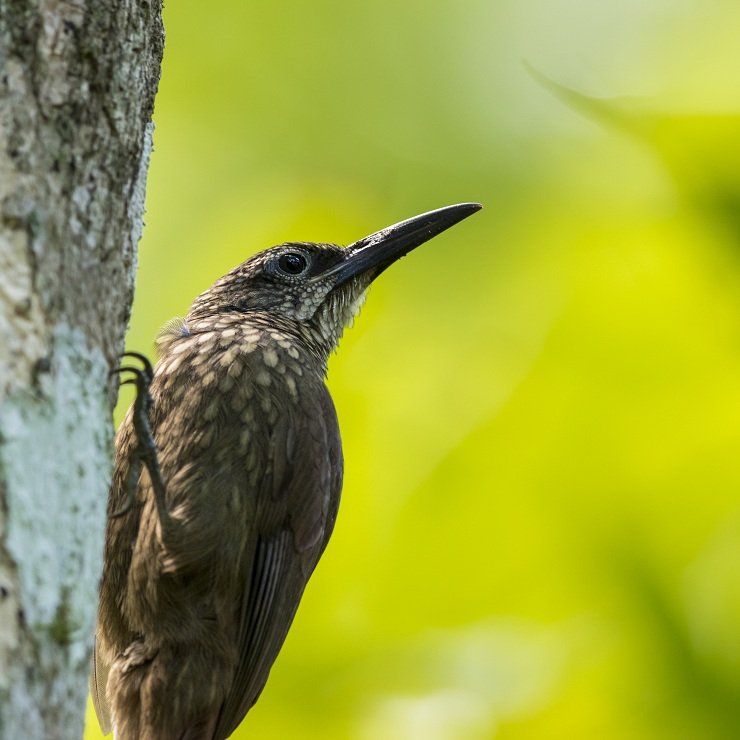
I finally photographed a Cocoa Woodcreeper in a cocoa estate a few weeks ago. Next step: photograph it on a cocoa tree.
The only unmarked woodcreeper in T&T is the aptly named Plain-brown Woodcreeper. This bird behaves more like an antbird than a woodcreeper very often, however. While most of the other woodcreepers tirelessly scour branches and tree trunks for insects and other grubs, the Plain-brown Woodcreeper can sometimes be found perched motionless just above the forest floor – usually in the path of an ant swarm. Insects, spiders and other arthropods attempting to escape the marauding ants climb anything available. Easy pickings for the patient and well-positioned bird.
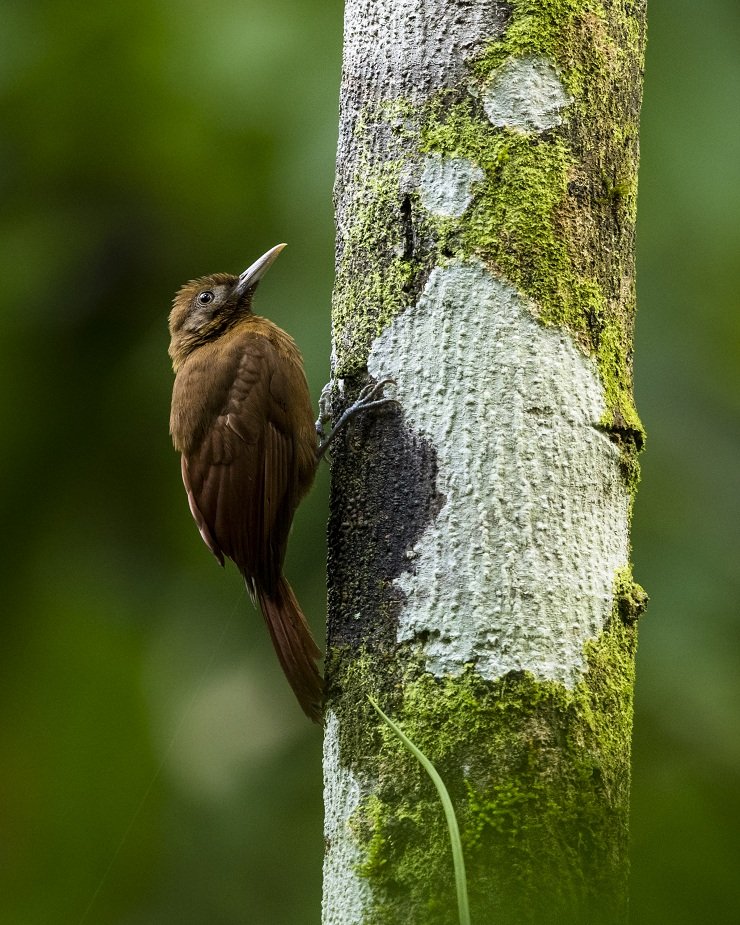
Plain-brown Woodcreeper
The subspecies of Straight-billed Woodcreeper found on Trinidad is endemic to the island and is quite picky in terms of habitat. This woodcreeper is restricted to mangrove forests on the west coast of Trinidad. As many other woodcreepers do, they vocalize pretty regularly throughout the day and therefore are easily tracked down.
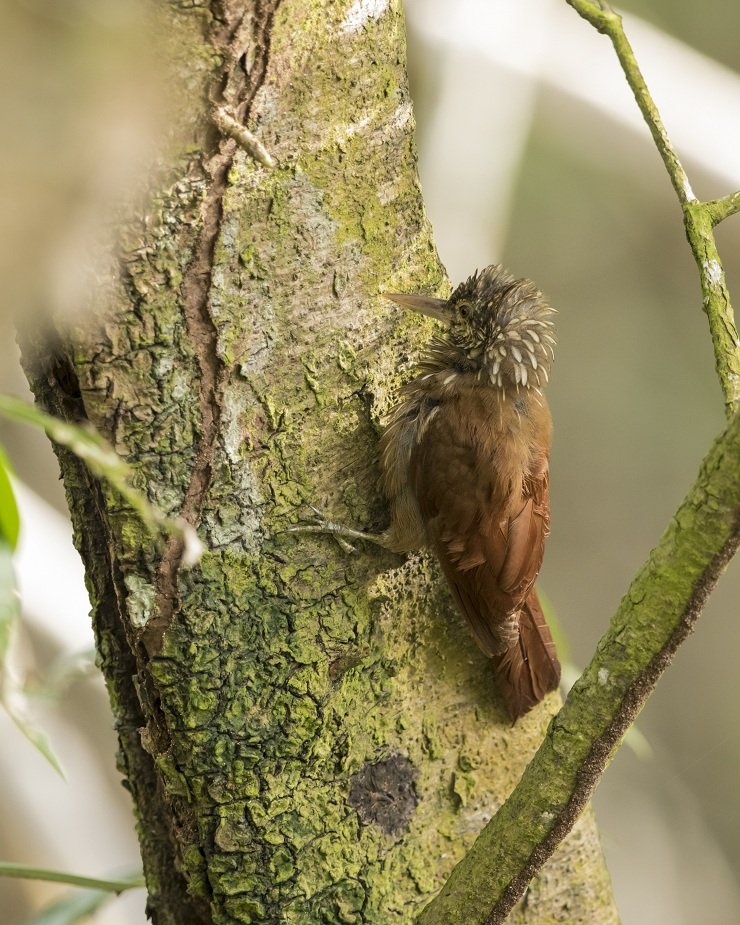
Straight-billed Woodcreeper
The fifth and final woodcreeper species was the most difficult for me to get a view of. The Olivaceous Woodcreeper is a tiny and inconspicuous woodcreeper found on Tobago and not Trinidad. I heard this species countless times before I was able to finally see one, when I did manage to get my eyes on one, the understanding of the lengthy wait became crystal clear. Olivaceous Woodcreepers ascend huge trees in the rainforest of Tobago in a spiral, making circles around the massive trunks as they gain height. Their small size, half-brown, half-grey coloration makes them difficult to detect – and even if you do, they look more like a small mouse than a bird!
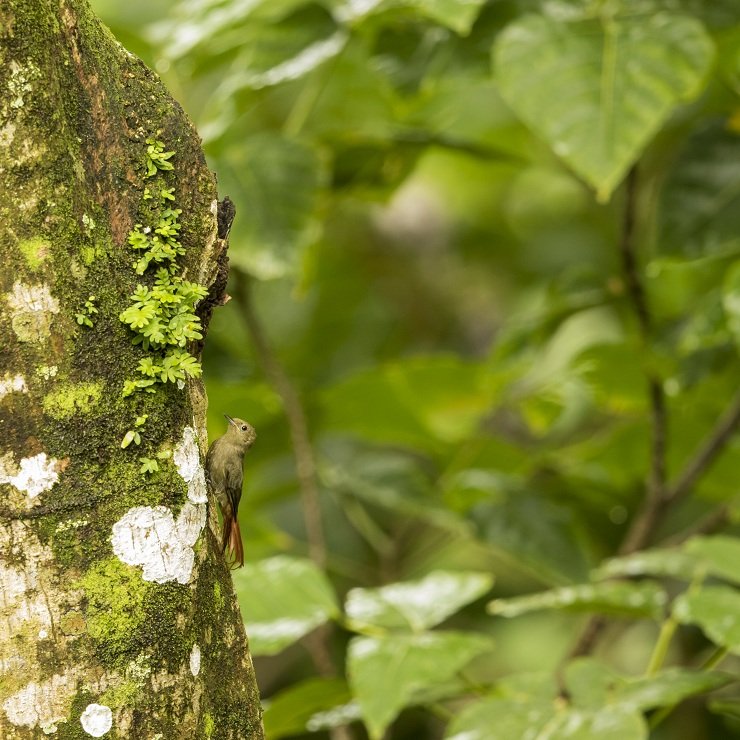
The vocalization of the Olivaceous Woodcreeper is a rich, jubilant rollercoaster of notes guaranteed to excite. I highly recommend a listen.
These wonderful woodcreepers are the only type of creeper welcome in the forest. We (birders, tour leaders and birding guides of all races) welcome everyone with warmth and love into the natural world, and vehemently reject persons who override that trust. Under no circumstances would we accept anyone who removes the feeling of safety and inclusiveness within our community.
Peace, love and happy birding.













Hey Faraz, this Monday I was out birding with your pal Washington Wachira. He says “Jambo.” 🙂
Ah! Wachira! Thanks for passing on the message, Michael. Hardly a day goes by where I don’t dream of returning to Kenya.
Well, it’s open now. If you can manage the flying, and get a negative PCR, you can go. And no one there is very busy. One of the few (only?) benefits of the current situation is that, if you ever need a birding guide and send one a message like: “Are you available to go birding tomorrow?” the response is almost always, “Sure, no problem!”
Yes I have heard. Trouble is that the gov’t in T&T has kept our borders closed, there are many people who have been waiting almost a year to return home and have been refused entry. There is also now a requirement to apply for an exemption to leave the country in addition to the rigmarole to get back in. Lots of plans have had to be quashed as a result. I was supposed to be in Kenya with some clients this year also.